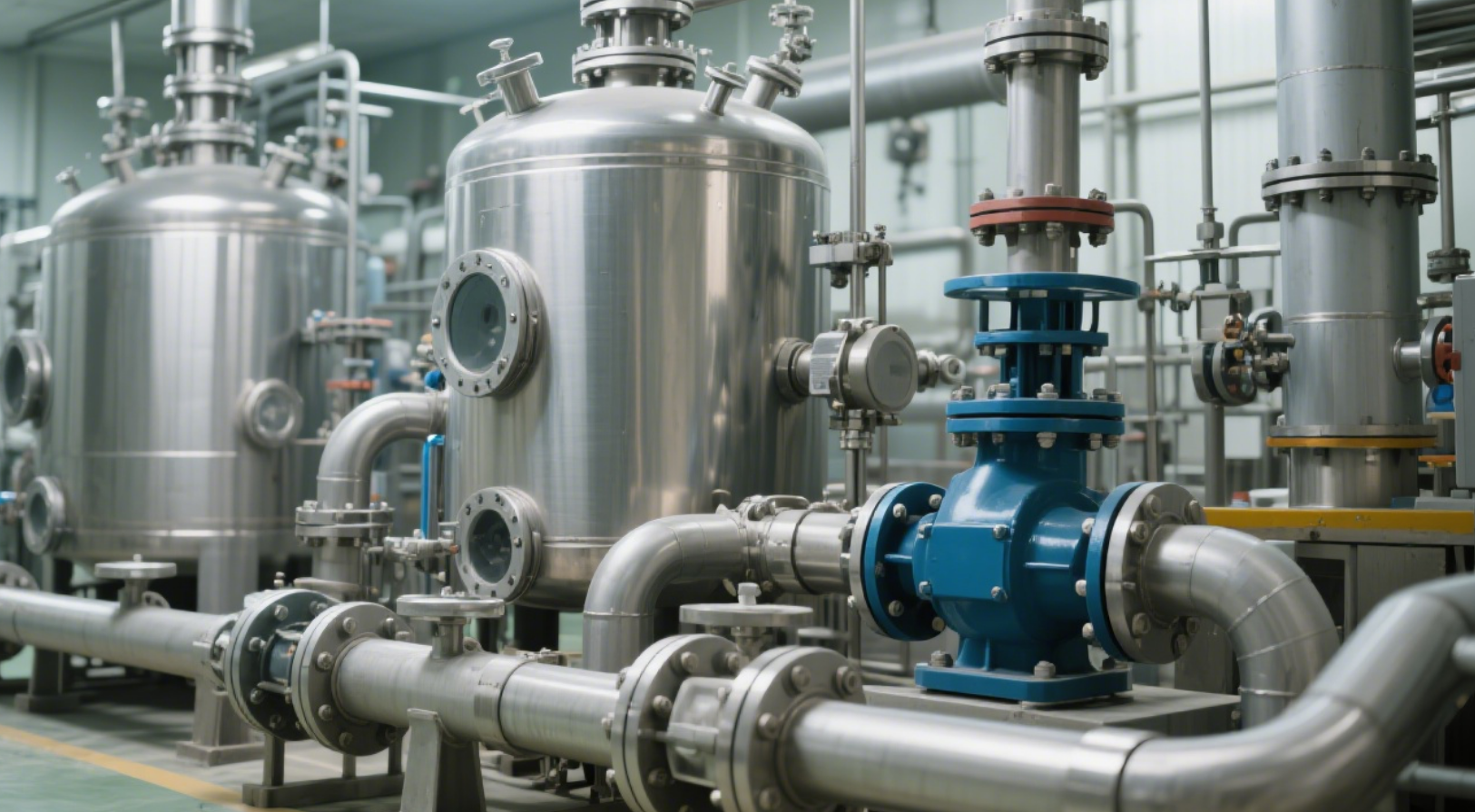Application of Acidic Food-Grade Sealants
2025/06/11
0
一、Definition and Characteristics of Acidic Food-Grade Sealants
Acidic food-grade sealants are sealing materials that strictly comply with food-grade safety standards and are specifically designed for acidic food environments. They have the following remarkable characteristics:
- Excellent Sealing Performance: Capable of tightly filling various gaps, effectively preventing the penetration of liquids, gases, and impurities, and ensuring that food is isolated from the external environment during storage, transportation, and processing.
- Superior Acid Resistance: Can withstand the erosion of acidic foods (such as fruit juices, vinegar, sauces, etc.) for a long time without swelling, deterioration, or releasing harmful substances due to contact with acidic substances.
- Stable Temperature Resistance: Maintains good physical and chemical properties within a wide temperature range, capable of withstanding high-temperature environments during high-temperature sterilization and adapting to low-temperature storage conditions.
- High Safety: Raw materials are strictly screened, free of harmful substances to the human body, such as heavy metals and harmful chemical additives, and comply with national and international food contact material safety standards, allowing direct contact with food.
二、Applications in the Food Packaging Sector
(一) Plastic Bottle Packaging
Plastic bottles are commonly used for packaging acidic beverages, such as fruit juices, carbonated drinks, and acidic functional drinks. In plastic bottle packaging, acidic food-grade sealants are mainly applied to the sealing connection parts of bottle caps and bodies.
- Common Plastic Bottles: For plastic bottles of different capacities (e.g., 200ml, 500ml, 1L, etc.) and shapes (e.g., round, square, special-shaped), the sealant is coated on the inner sealing ring of the bottle cap or the threaded mouth of the bottle body to fill the tiny gaps between them, forming a continuous and uniform sealing layer. For example, in the spiral cap sealing of round plastic bottles, the sealant forms a tight contact between the crest and root of the thread to prevent beverage leakage and the entry of external air and bacteria. For plastic bottles with smaller capacities, due to the smaller size of the bottle cap, the coating precision of the sealant is required to be higher to ensure reliable sealing within a limited space; for large-capacity plastic bottles, the sealant needs to have sufficient ductility and flexibility to adapt to slight deformations of the bottle body during transportation.
- Special Design Bottle Caps:
- Tamper-Evident Caps: The sealing of tamper-evident caps not only prevents liquid leakage but also provides an obvious breaking signal when opened. Acidic food-grade sealants act on the connecting bridge and sealing ring of the tamper-evident cap to ensure reliable sealing before opening and breakage of the connecting bridge when opened, while the sealing layer does not compromise food safety due to the opening force.
- Sports Bottle Caps: Sports bottle caps are usually used for acidic beverages that are convenient to drink, such as sports functional drinks. These caps need to be opened and closed frequently, and the sealant needs to have good wear resistance and resilience to maintain good sealing performance after multiple openings and closings, preventing the beverage from leaking due to shaking during carrying.
(二) Glass Bottle Packaging
Glass bottles are commonly used for packaging pickled foods (such as pickles, pickled cucumbers), jams, honey, acidic canned foods, etc. Acidic food-grade sealants are widely used in glass bottle packaging:
- Bottle Cap Sealing:
- Screw Caps: For glass bottles with screw caps, the sealant is coated on the inner sealing gasket of the cap or the threaded mouth of the bottle body. When the cap is screwed tight, the sealant is compressed to fill the gaps between the threads and the contact area between the cap and the flat surface of the bottle mouth, forming a double seal. For example, in the screw cap sealing of jam bottles, the sealant needs to withstand the acidic components and sugars in the jam without sticking or deteriorating due to long-term contact.
- Press-Spin Caps: Press-spin caps achieve sealing by combining pressing and rotating, and the sealant forms a seal between the sealing lip of the cap and the groove of the bottle mouth to prevent external air and moisture from entering the bottle and maintain the flavor and quality of pickled foods.
- Caps with Rubber Seals: Some glass bottles use rubber seals as the initial seal, while acidic food-grade sealants play an auxiliary sealing role, filling the tiny gaps between the rubber seal and the bottle mouth and cap to enhance the sealing effect, especially during high-temperature sterilization, the temperature resistance of the sealant ensures the stability of the sealing structure.
- Sealing of Bottle Body with Labels and Fittings: For glass bottles with decorative labels or special fittings (such as handles, nozzles), sealants are used for the 粘贴 edges of labels and bottle bodies and the connection parts of fittings and bottle bodies to prevent water and moisture from seeping into the bottle from these parts, avoiding label detachment and fitting looseness that affect the integrity of food packaging.
(三) Metal Can Packaging
Metal cans (such as easy-open cans, two-piece cans, three-piece cans) are commonly used for packaging acidic beverages, canned foods, etc. The applications of acidic food-grade sealants in metal can packaging mainly focus on the following aspects:
- Sealing of Can Body with Bottom and Lid: In the manufacturing process of metal cans, the can body is combined with the bottom and lid through a curling process, and the sealant is coated in the gaps of the curl to form an effective sealing layer, preventing the contents from leaking and external bacteria from invading. For example, at the top pull ring of an easy-open can, the sealant ensures the seal between the pull ring and the can lid, and the contents will not be contaminated before the pull ring is opened.
- Easy-Tear Lid Sealing: For metal cans with easy-tear lids, the sealant forms a film in the sealing area between the lid and the can body, which not only ensures sealing performance but also provides appropriate resistance when tearing the lid, facilitating consumer opening, and avoiding sealant residue from contaminating food during the tearing process.
三、Applications in Food Processing Equipment
In the food processing process, many equipment need to come into contact with acidic foods, such as mixing tanks, reaction kettles, pipes, valves, pumps, etc. The sealing parts of these equipment must use acid-resistant sealants to ensure the safety of the production process and food quality.
- Mixing Tanks and Reaction Kettles: Mixing tanks are used for mixing and stirring acidic foods, and reaction kettles are used for chemical reactions or heat treatment of acidic substances. Sealants are applied to the flange connection sealing of the tank body and lid, the shaft seal of the stirring shaft and the tank body, etc. In flange connections, the sealant fills the tiny defects on the flange surface to form a uniform sealing film, withstanding the vibration and pressure during stirring, as well as process conditions such as high temperature and pressure. At the shaft seal, the sealant needs to have good wear resistance and lubricity to reduce the friction between the stirring shaft and the seal, extend the service life of the equipment, and prevent the leakage of acidic materials.
- Pipes and Valves: Acidic foods are transported through pipes during processing, and valves control the flow direction and flow rate of materials. Sealants are used for the threaded connections and flange connections of pipes and the sealing surfaces of valves to prevent acidic materials from leaking during transportation, polluting the environment and equipment, and avoiding external impurities from entering the pipeline system to affect food quality. For high-temperature sterilization pipes, the temperature resistance of the sealant ensures that it will not fail during steam sterilization and maintains the sealing performance of the pipes.
- Pump Equipment: Pumps are used to transport acidic foods, such as centrifugal pumps, plunger pumps, etc. Sealants play a sealing role in the pump’s sealing cavity, shaft seal ring, and other parts to prevent the acidic materials inside the pump from leaking to the outside and block the entry of external dust and moisture into the pump, ensuring the normal operation of the pump and food safety.
四、Applications in Food Storage Containers
Food storage containers, especially large storage tanks, are commonly used for storing acidic liquid foods, such as vinegar, soy sauce, acidic fruit juice concentrates, etc. Acidic food-grade sealants play an important role in the following parts of the storage tanks:
- Tank Interfaces: Inlet ports, outlet ports, level gauge interfaces, thermometer interfaces, etc., of the storage tank. The sealant is used for the connection sealing between the interfaces and pipes, instruments, etc., to prevent the stored acidic liquids from leaking and external impurities from entering the storage tank. For example, in the flange connection of the inlet port, the sealant fills the gap between the flanges and withstands the pressure of the liquid in the tank to ensure the sealing of the connection part.
- Tank Valves: Valves on the storage tank, such as globe valves, ball valves, butterfly valves, etc. The sealant is used for the sealing packing of the valves and the sealing surfaces of the valve seats and cores to ensure that the valves can effectively control the flow of liquids when opened and closed and prevent leakage. For storage tanks that store acidic liquids for a long time, the aging resistance and chemical corrosion resistance of the sealant are crucial to ensure stable sealing performance during the storage period.
- Tank Manholes and Access Ports: Manholes and access ports are used for internal cleaning and maintenance of the storage tank. The sealant forms a seal at the connection between the manhole cover and access port cover and the storage tank body to prevent external moisture, dust, and insects from entering the storage tank and contaminating food during storage.
五、Considerations for Selecting Acidic Food-Grade Sealants
- Sealing Performance: According to different application scenarios, select sealants with appropriate viscosity, hardness, and elasticity to ensure that they can fill gaps, form a reliable sealing layer, and prevent liquid and gas leakage.
- Acid Resistance: Different acidic foods have different pH values and acidic components, and the sealant needs to be able to withstand the erosion of a specific acidic environment without undergoing chemical changes or releasing harmful substances.
- Temperature Resistance: Consider the temperature change range during food processing, storage, and transportation. The sealant needs to maintain good physical properties at the highest and lowest temperatures, such as not softening or cracking.
- Safety: It is necessary to select sealants that have passed food-grade safety certification to ensure that their raw materials and production processes comply with relevant standards, will not pollute food, and protect consumer health.
- Construction Performance: The construction method of the sealant (such as coating, injection, molding, etc.) should adapt to the specific application scenario, and the construction process should be simple and efficient to meet the requirements of production efficiency.
- Compatibility: It has good compatibility with the contacted materials (such as plastic, glass, metal, etc.), will not cause mutual corrosion or adhesion, and ensure the sealing effect and service life of the materials.
六、Future Development Trends
- Green and Environmentally Friendly: With the improvement of people’s awareness of food safety and environmental protection, acidic food-grade sealants will develop in the direction of green and environmental protection, using degradable, non-toxic, and harmless raw materials to reduce environmental pollution.
- High Performance: To meet the increasingly strict requirements of food processing and packaging, sealants will continue to improve their performance, such as higher acid resistance, temperature resistance, aging resistance, and sealing reliability, to adapt to complex application environments.
- Diversified Functions: In addition to the basic sealing function, future acidic food-grade sealants may have more functions, such as antibacterial and mildew-proof, antioxidant, indicating the sealing status, etc., to provide more comprehensive protection for food safety and quality.
- Intelligent Applications: Combining with the Internet of Things and intelligent sensing technologies, develop sealants with intelligent monitoring functions, which can real-time monitor the sealing status and food quality changes, providing more precise management and control for food production and storage.
In conclusion, acidic food-grade sealants play a vital role in food packaging, processing, and storage, and their application scope will continue to expand with the development of the food industry. When selecting and using acidic food-grade sealants, various factors need to be comprehensively considered to ensure that their performance and safety meet actual needs, while paying attention to the industry development trends to adapt to the changing market requirements.

















